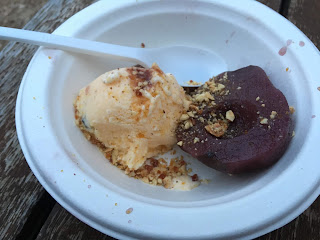I've been aware of Sally Rooney for some time, but naturally haven't got to reading either of her two very famous novels, Conversations with Friends or Normal People, even though I've been meaning to. So I was very excited to see Mr Salary in the very cute (but overpriced) Faber Stories series. It would be the first Faber Stories edition that I would buy, and the first I read.
Mr Salary is the story of Sukie Doherty returning to Dublin from Boston to see her father, Frank, who is in hospital and is dying. They've had a difficult relationship
Frank had problems with prescription drugs. During childhood I had frequently been left in the care of his friends, who gave me either no affection or else so much that I recoiled and scrunched up like a porcupine.This is despite the fact that Frank has been a single father, or perhaps it is because Sukie's mother had died soon after her birth. Sukie (which seems a rather un-Irish name to me, is it really an Irish name?) will be staying with Nathan, an older family friend who she had lived with when she was a student.
In my second year of college we ran out of savings and I could no longer pay rent, so my mother's family cast around for someone I could live with until my exams were over.There has always been more the possibility of something more to their relationship though. The cover blurb summarises it nicely
With her minute attention to the power dynamics in every day speech, she builds up sexual tension and throws a deceptively low-key glance at love and death.Mr Salary is such a small morsel, 33 (tiny) pages. Easily read in one session, although in my usual form I managed to fall asleep just before the end... Mr Salary was like an amuse-bouche for my planned Sally Rooney degustation. It has certainly whetted my appetite.
Sally Rooney's first published story was actually nonfiction - an essay about her time as a competitive debater, Even If You Beat Me in The Dublin Review. Mr Salary was shortlisted for the 2017 Sunday Times/EFG Short Story Award. She has been dubbed the First Great Millenial Novelist so it's great to finally get started on reading her work.
Mr Salary was originally published by Granta in Granta 135 New Irish Writing in 2016. It is actually freely available online.
Faber Stories is a collection of short stories to celebrate Faber's 90th anniversary by publishing "masters of the short story form". These are delightful little treats, but I think overpriced in Australia at $8.








































